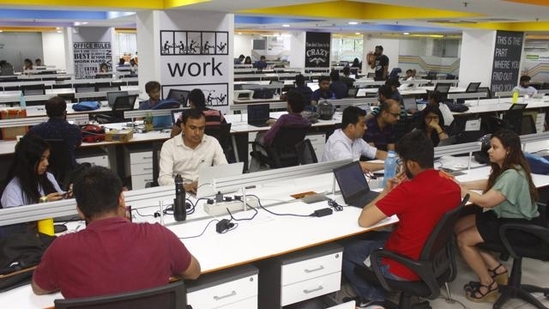Enable flexible work to bridge the gender gap
Flexible working boosts productivity, gives access to a wider talent pool, and increases employee retention rates, especially for women.
The Nobel Memorial Prize awarded to Claudia Goldin highlighted her work on women’s workforce participation, which showed how caregiving responsibilities could hurt women’s wages and careers. However, it also highlighted that redesigning work arrangements to offer more flexibility and substitutability can facilitate higher pay for women.

In India, this discussion is critical due to the barriers to women’s participation in the workforce. Many Indian companies have retained flexible work arrangements in their policies, much after the pandemic subsided. This is because it boosts productivity, enables talent acquisition, and helps in employee retention. However, there has been friction between some leaders preferring conventional work models and employees adapting to newer, more flexible models.
Returning to pre-pandemic models has led to higher attrition rates, particularly in the tech-enabled sector, with surveys indicating that a lack of flexibility drives women to leave the workforce. A post-pandemic study by the Institute for What Works to Advance Gender Equality (IWWAGE) found that an overwhelming majority (89%) of women in hybrid work settings found the reduced commute time a great advantage and 80% of women consider flexible working hours a big advantage. As many as 22% of women expressed an intent to leave the workforce without such flexibility. This is strong evidence for the demand for flexible work models, and that they are not just a pandemic-induced phenomenon. The IWWAGE study also found that women cited improved personal finances, and ease in managing household responsibilities as key benefits of flexible work.
Policymakers globally have also started accepting this fundamental market shift. Both the B20 Communique and the G20 Leaders’ Declaration noted that technology-driven work options are necessary to expand women’s access to employment, cultivate more inclusive workplaces, and bring more women to the decision-making table.
Flexible working boosts productivity, gives access to a wider talent pool, and increases employee retention rates, especially for women. Evidence from the United Kingdom (UK) suggests that the proportion of women employed full-time has risen from 56.5% in 2019 to 58.7% in 2023, with the increase being much higher in sectors such as finance, insurance, and IT, where companies had adopted flexible work policies.
Countries like Ireland and Spain have recognised the potential of flexible work as a driver of regional development. Ireland’s “Connected Hubs” initiative has integrated over 400 co-working spaces nationwide into an affordable and accessible network for remote workers. These hubs are often combined with daycare facilities to support caregivers. By recognising similar opportunities within its smaller towns and investing in infrastructure and skilling, India has the potential to create a truly inclusive and economically decentralised work ecosystem.
While flexible work models are in demand in India, their implementation has been uneven. Some private entities have taken the lead to frame key flexible workplace policies, while others are still debating if traditional work models would make a comeback.
The government has already moved to support work-from-home models - the Special Economic Zone (SEZ) rules were amended to allow for 100% work-from-home options for IT SEZs up until December 31, 2024. This policy should be carried forward and extended to other sectors as well, in consultation with industry. Further, as states notify new rules under the labour code, they should consider employer-employee responsibilities in flexible work settings.
Sustainable flexible work arrangements require facilities that are available near home. Affordable coworking spaces called Work Near Home (WNH) hubs present a promising solution for advancing women’s workforce participation and flexible work. Some states including Telangana, Goa, and Karnataka, have initiated WNH hubs, though broader implementation remains pending. Kerala’s plan to establish WNH hubs near residential areas and transportation hubs will benefit flexible workers. By including services like daycare facilities and accessible transportation, these hubs can enhance employment accessibility in smaller towns for both women and men, bolstering the local economy. The government should invest in necessary infrastructure and provide high-speed internet connectivity in Tier 2 and Tier 3 cities to expand WNH hubs.
With the post-pandemic recovery, India now has a unique opportunity to address historical inequities in the workplace using technology. Developing future-ready work policies is the key to advancing in the tech-led revolution.
Rohit Kumar is the head of Government Relations at Zoom India. Preethi Rao is director, Partnerships and Outreach at LEAD at Krea University. The views expressed are personal
All Access.
One Subscription.
Get 360° coverage—from daily headlines
to 100 year archives.



HT App & Website







